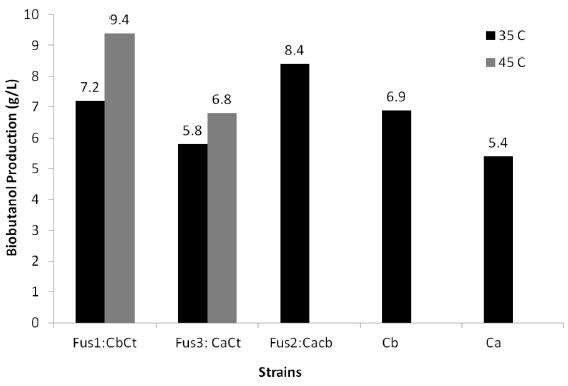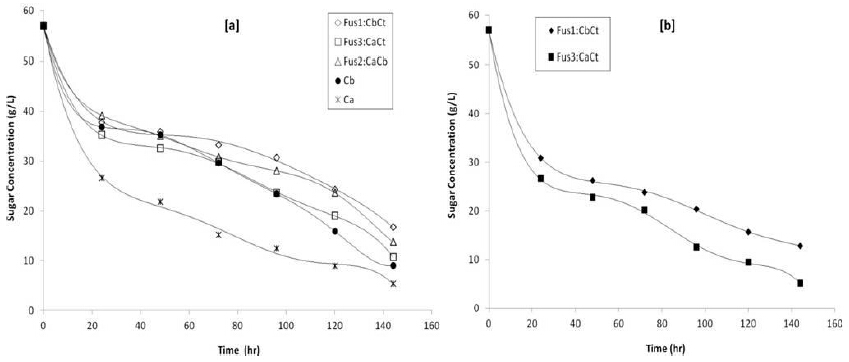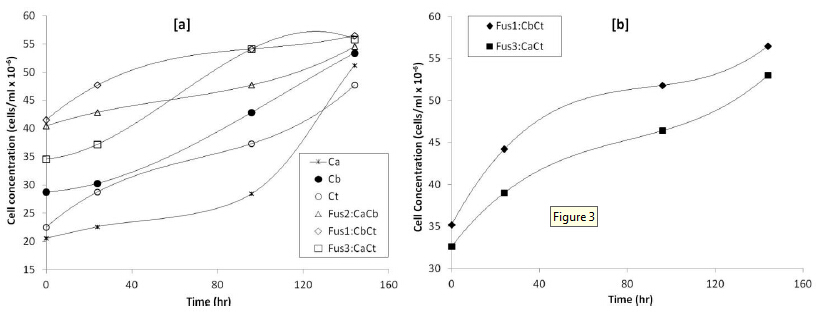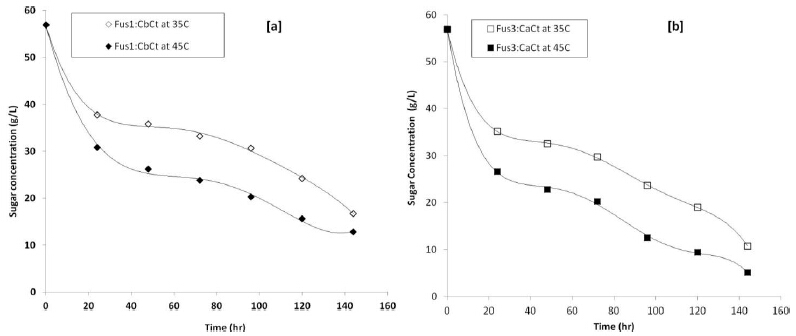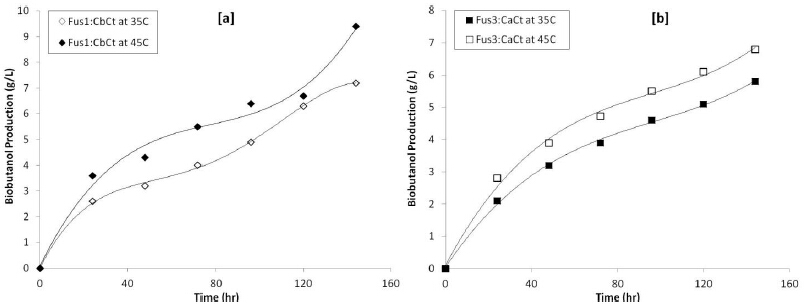1. Introduction
With the diversification of the international monetary structure and the global trend of dollarization, China timely put forward the RMB internationalization strategy. Cohen BJ (2012) argued that the key to success in internationalization of a currency is whether the preferences of market demand can be changed, so the market needs confidence in the future value of the currency, at least in the early stages of its internationalization. Actually, changes in foreign trade and exchange rate expectations will affect the foreign exchange market confidence changes, then on the RMB internationalization. Hence, it is strategy and significant to study for the impacts of foreign trade and the RMB exchange rate expectation on the process of RMB internationalization.
The internationalization of currency refers to the international recognition and acceptance, and the three functions—international medium of circulation, international medium of payment and international reserve measure—are gradually realized. Actually, this kind of internationalization can be considered as a process, from regional to global, also from "investment currency" to "reserve currency". Thus, the internationalization of currency can be divided into different stages of the cyclical changes.
Scholars usually do not strictly distinguish between exchange rate and exchange rate expectations. Non-residents are anxious to accumulate more renminbi-denominated assets as they believe that the renminbi will appreciate in the future (Otero-Iglesias M, 2011). A full marketization of its RMB exchange rate could push forward RMB's internationalization in order to get away from a lot of non-risk arbitrage opportunities (Zhang B, 2013). Cheung YW (2014) analyzes that a well-organized offshore renminbi market will complement the PRC's renminbi internationalization policy because offshore markets which has market-oriented exchange rate and expectation offer the opportunities to experiment with the global use of the currency. Sha WB and Liu HZ (2014) examine the dynamic customs among the internationalization of RMB, exchange rate fluctuation, and exchange rate expectations based on an SVAR mode. Sha finds that RMB exchange rate volatility and its expectation can significantly affect the foreign traders' choice of settlement currency, as well as foreign investors in the RMB asset allocation, then affecting the process of RMB internationalization. By constructing the theoretical model of overseas RMB demand and using the linear regression and MS-VAR method, Wang SM (2016) finds it is necessary to pay attention to the fluctuation of RMB exchange rate expectation in the process of RMB internationalization since RMB exchange rate expectation is a more influential factor of overseas RMB demand in the long run.
However, there are only few empirical analyses directly the impact of foreign trade on the process of monetary internationalization for China. Wang XL, Liu HQ (2012) mentions that balance of trade, foreign exchange reserves and RMB internationalization are dishomony and the main reason is the unbalance of RMB settlement in cross-border trade. Also, Yao XY and Jie T (2010) provide the result that by enhancing the exchange rate risk management and optimizing the foreign trade structure, foreign trade micro-foundation of RMB internationalization can be strengthen, which is also the basic requirement for enterprises. Liu HQ (2012) study on RMB Cross-Border Settlement in China's Foreign Trade Enterprises, using the index of REER and TCI to enhance the argument. The result confirms that Chinese foreign trade enterprises' behaviors are great parts in international settlement.
So far, similar empirical analyses have been lacking for the relationship between the three economic variables. Hence, we try to fulfill the existing gap and deliver additional evidence. Our goal is to investigate the impacts of both exchange rate expectation and import and export volume on RMB internationalization process by employing SVAR technique, which is the innovation of this paper.
This paper is organized as follows. In the next section we present the progress of RMB internationalization separated by Hodrick-Prescott filter. In the third section we present the role of exchange rate expectation as well as import and export volume in RMB internationalization. This is followed by details on the methodology and a presentation of the empirical results of our study. The last section concludes our study.
2. Assessing Progress in RMB Internationalization
The internationalization of currency refers to the international recognition and acceptance, which can be considered as a process.
We argued that the scale of RMB deposits outside reflects the extent of recognition and acceptance in the international market, so its fluctuation partly reflects the changes in the international status of RMB.
Hong Kong has become the largest offshore financial market because of its close political and economic ties with the mainland. Its RMB deposit and loan scale occupies the main part of RMB deposits abroad. Even though more clearing banks opened in most of the main international financial centers like Singapore, London and Frankfort, the proportion of RMB deposit in Hong Kong is still the largest part in the world though it has reduced quite a lot in comparing with world market. Besides, we considered of the data collection and data integrity.
Therefore, we chose monthly data of offshore RMB deposits in Hong Kong from July 2009 (generally considered as the beginning of RMB internationalization as the first cross-border trade RMB settlement business was successfully completed by the Bank of China) to September 2016. After taking natural logarithm to eliminate the heteroskedasticity and dimension effect, we separated the cycle by Hodrick-Prescott filter, which is considered as a proxy variable for the process of RMB internationalization (See Figure 1, in which lnP equal to the progress).
Figure 1 shows that the process of RMB internationalization has periodic fluctuations, with significantly rising trend. From 2009 to 2016, there are two cycles. It can be considered as a decline phase during 2009 to 2010, while it reaches a peak in 2011. Since then, it sustains stable along the trend, with small fluctuations sometimes.
Hence, the RMB internationalization process can be divided into three cycles.
The first cycle (2009–2010): It could be considered as the early stage in RMB internationalization-gradually expanded demand for Yuan in neighboring regions. Despite of the signing of currency swap agreements with other Asian countries and the implementation of offshore RMB settlement pilot, 1. China's foreign trade dependence remained at around 60%; 2. Capital account open degree was low; 3. The free convertibility of RMB could not achieved; 4. RMB internationalization was vulnerable to be affected by the international financial crisis and macroeconomic constraints.
The second cycle (2011–2012): The process of RMB internationalization is gradually advanced to the regionalization of RMB. 1. The 12th Five-Year Plan of the State emphasized the transformation of the economic structure and the reform of the capital market. 2. The proportion of foreign trade to GDP had entered a reasonable range of 50–60%. 3. With the gradual opening of the capital market, the overseas institutions had better investment in China. Those above made it quite expectable and presumable that the RMB internationalization had entered into a new cycle.
The third cycle (2013–2016): The RMB internationalization is advanced globally and smoothly with its own unique cycle. 1. With the completion of the Shanghai International Financial Center and the growing maturity of the ASEAN Free Trade Area, the RMB settlement pilot program with the neighboring countries expanded gradually. 2. RMB joined the SDR to enhance its international status, meanwhile reducing the abnormal fluctuation in the RMB internationalization process. 3. The stability of the RMB internationalization process, however, cannot be restored to the optimal level immediately due to China's New Normal and the strengthened RMB devaluation pressure.
3. Role of Import and Export Volume & Exchange Rate Expectation in RMB Internationalization
3.1. Effects of RMB Exchange Rate Expectation on RMB Internationalization Process
The expected change in the RMB exchange rate has a positive impact on the RMB internationalization process. One important reason is that the expectations of RMB appreciation attract non-residents holding RMB or RMB denominated assets.
If RMB continues to appreciate or the RMB appreciation is widely expected in the offshore market, the expected return on the RMB denominated assets will increase, so do the preference for non-residents to RMB assets, that is, non-residents are more likely to adjust their portfolios so that they can increase the holdings of RMB assets. This adjustment expands oversea demand and oversea stock for Yuan, which makes it easier for RMB internationalization to enter into the rising cycle. On the contrary, the holdings of RMB assets will be reduced, leading RMB internationalization to a recession cycle.
Notably, the current exchange rate appreciation expected due to lagged effect and short-term arbitrage, may have negative effect to the scale of RMB deposits abroad. However, this effect won't be long because of central bank intervention as well as the narrowing of arbitrage space.
3.2. Effects of Foreign Trade on the RMB Internationalization Process
Foreign trade affects the RMB internationalization. General international economics textbooks and academic literature study the relationship between foreign trade balance and foreign exchange reserves. This relationship can be simply expressed as trade surplus forms a positive increase in foreign exchange reserves, while trade deficits form negative increments (Wang XL, 2012). And the level of foreign exchange reserves reflects the policy choice and market sentiment, that is, reasonable foreign surplus (high reserves) mean that the exchange rate intervention has a higher initiative and a stronger ability to intervene, which cannot only reduce the probability of the occurrence of currency crisis, but also enhance the market confidence. It is conducive to the international reputation of the RMB, making RMB internationalization enter into a rising cycle.
Nevertheless, excessively large foreign trade in a certain period may have negative effects on the long-term RMB internationalization. China's import and export volume structure, which is over-reliance on the US dollars, is vulnerable to international economic fluctuations. Once the international financial crisis occur, or European & American governments fiscal deficits cause the currency devaluation pressure, the exchange risk of transfer to other currency assets, leading to financial risk generation and spread.
4. Data Sources and SVAR Methodology
4.1. Data and Descriptive Statistics
Hong Kong's offshore RMB deposits, 1-year forward exchanges rates in offshore OTC market and Foreign Trade valued in US dollars are used in this study. We used monthly data provided by WIND for the period Jul 2009 to Aug 2016 for Chinese economies. More specifically,
RMB Internationalization Process (P) 2009/07–2016/08
Used the proportion of RMB deposit in Hong Kong, which had been described above.
Exchange Rate Expectation (EXPR) 2009/07–2016/08
Used RMB Non-Deliverable Forward (NDF) in Hong Kong's offshore market (change to indirect quotation), as it can be basically bring common supply and demand into market equilibrium exchange rate, less subject to government intervention.
When the value is up, it indicates that the RMB exchange rate is facing upward pressure; or (when it is failed) means there is depreciation pressure.
Foreign Trade (FT) 2009/07–2016/08
Used import and export volume.
In order to eliminate the influence of heteroscedasticity and dimension, we took the logarithm of these three variables. Notably, for the method, though VAR generally needs more than 100 cases with a long-lag estimation, the paper is limited by data so that 87 cases are chosen.
4.2. Methodology: Structural Vector Autoregressive (SVAR) Models
Structural vector autoregressive model (SVAR) is an improvement and expansion of the vector autoregressive model (VAR), which considers the covariance factors between variables. ADF test (see Table 1) showed variables lnEXPR, lnFT and lnP were stationary, conforming to the requires of SVAR model. As a result, we estimated the SVAR (3) model taking this form:
|
${{\text{A}}_{\text{0}}}{{\text{Y}}_{\text{t}}}\text{= C + }{{\text{ }\!\!\Phi\!\!\text{ }}_{\text{1}}}{{\text{Y}}_{\text{t}}}_{\text{1}}\text{+ }{{\text{ }\!\!\Phi\!\!\text{ }}_{\text{2}}}{{\text{Y}}_{\text{t}}}_{\text{2}}\text{+ }\cdots \text{ + }{{\text{ }\!\!\Phi\!\!\text{ }}_{\text{p}}}{{\text{Y}}_{\text{t}}}_{\text{p}}\text{+ }{{\text{ }\!\!\mu\!\!\text{ }}_{\text{t}}}$
|
(1)
|
Table 1. Result of ADF.
| Variable |
Modle form |
ADF |
Significant level |
| 1% |
5% |
10% |
Result |
| lnEXPR |
(c, t, 11) |
-8.43881*** |
-4.07101 |
-3.46420 |
-3.15859 |
Stable |
| lnFT |
(c, 0, 11) |
-4.87496*** |
-4.07242 |
-3.46487 |
-3.15897 |
Stable |
| lnP |
(c, 0, 11) |
-2.91679** |
-4.06829 |
-3.46291 |
-3.15784 |
Stable |
Note: C: intercept term; t: trend term; D: first order difference operator.
***, **, * denotes statistical significance at the 1 percent, 5percent, 10 percent level. |
where: yi, t = [lnEXPR, lnFT, lnP]' is a vector of observable variables exchange Rate expectation, foreign trade, RMB Internationalization process--as described above); μi, t=[μ1, t, μ2, t, μ3, t]' is a vector of error terms; The coefficients ak, j (k, j = 1, 2, 3, 4; k ≠ j, k, j are the indices of variable and time) in the matrix A0 reflect the covariance of the 3 variables (1 on the diagonal). If A0 is invertible, the general expression of SVAR simplification can be obtained by simultaneously multiplying the inverse matrix A0-1 of A0 on both sides of Eq. (1):
|
${{\text{Y}}_{\text{t}}}\text{= }{{\text{A}}_{\text{0}}}^{-1}\text{C+}{{\text{A}}_{\text{0}}}^{-1}{{\text{ }\!\!\Phi\!\!\text{ }}_{\text{1}}}{{\text{Y}}_{\text{t-1}}}\text{+}{{\text{A}}_{\text{0}}}^{-1}{{\text{ }\!\!\Phi\!\!\text{ }}_{\text{2}}}{{\text{Y}}_{\text{t-2}}}\text{+ }\cdots \text{ + }{{\text{A}}_{\text{0}}}^{-1}{{\text{ }\!\!\Phi\!\!\text{ }}_{\text{p}}}{{\text{Y}}_{\text{t-p}}}\text{+}{{\text{A}}_{\text{0}}}^{-1}{{\text{ }\!\!\mu\!\!\text{ }}_{\text{t}}}$
|
(2)
|
Among this, let
|
${{\text{ }\!\!\varepsilon\!\!\text{ }}_{\text{t}}}\text{= }{{\text{A}}_{\text{0}}}^{-\text{1}}{{\text{u}}_{\text{t}}}$
|
(3)
|
Such a model made the estimate of the parameters in A0 matrix need at least 6 constraints. According to Eq. (3), we could get 3 constraints while assumed the other 4 constraints through the following economic theories:
1. The exchange rate expectation is not affected by the fluctuations of the import and output volume because of the hysteresis effect of the exchange rate. (a12= 0) 2. The Foreign Trade is not affected by either the exchange rate expectation or the Hong Kong's offshore RMB deposit since it's mainly affect by import regulation, foreign supply and dominate demand, currency change and exchange rate (a21 = a23 = 0).
The lag order of the underlying VAR model was determined by the standard information criteria. Again, taking into account a relatively short sample, the Schwartz criterion was applied, which indicated second order lag length. The AR Roots Graph test showed that the model was stable. Model coefficients and thresholds can be estimated by maximum likelihood estimation or conditional least square (see Table 2). We computed that the estimates all passed significance test (significant level 1%) with the signs in accordance with the expected values.
Table 2. The Estimated SVAR Parameters-estimation Results.
| Current correlation coefficient |
Estimated value |
Current correlation coefficient |
Estimated value |
Current correlation coefficient |
Estimated value |
| -A31 |
-108.35520*** |
A32 |
0.78445*** |
A13 |
22.80570*** |
| Note: ***, **, * denotes statistical significance at the 1 percent, 5 percent, 10 percent level. |
5. SVAR Model Estimation Results
5.1. Results of Impulse Responses
Having established the SVAR model, we computed the impulse response functions to illustrate the dynamics of the short-term reactions. Figure 2 and Figure 3 below present the output impulse response to 1 percent of the shock of exchange rate expectation as well as foreign trade for RMB internationalization.
The reactions of RMB internationalization to the shocks are both positive but different. For the exchange rate expectation shock, an initial effect is positive but weak, maintained during 11 periods. In the long term, as shown by the cumulative impulse curve (see Figure 2), the confidence interval is over 0, which indicates that the positive impact on RMB internationalization is significant.
As for the foreign trade shock, the maximum positive effect takes place in the third period, and then it maintains about 0.2%. From the cumulative pulse function (see Figure 3), we can observe that the stimulus effects of the shock are strictly negative and persistent.
5.2. Results of Variance Decomposition
Variance decomposition is used to evaluate the importance of different structural shocks by analyzing their contribution to variances of variables.
We concerned about the impact of expected exchange rate fluctuations (lnEXPR) and volatilities of foreign trade (lnFT) on the RMB internationalization (lnP) (see Table 3).
Table 3. Variance Decomposition.
|
Variance decomposition of lnP |
Variance decomposition of lnEXPR |
Variance decomposition of lnFT |
| Period |
lnEXPR |
lnFT |
lnFT |
lnP |
lnEPR |
lnP |
| 1 |
11.95409 |
2.26342 |
0.00000 |
0.00000 |
0.81984 |
0.00000 |
|
-7.18055 |
-3.08595 |
0.00000 |
0.00000 |
-2.92481 |
0.00000 |
| 2 |
17.84651 |
4.40078 |
0.01334 |
0.13651 |
1.29528 |
0.44659 |
|
-9.11995 |
-4.00585 |
-0.78064 |
-0.36447 |
-2.89613 |
-1.01731 |
| 3 |
20.61007 |
6.47547 |
0.04072 |
0.38460 |
5.10542 |
1.24257 |
|
-10.60370 |
-5.46102 |
-1.46763 |
-1.01209 |
-4.22591 |
-1.91141 |
| 4 |
22.17945 |
7.69780 |
0.14495 |
0.68558 |
9.40164 |
1.89787 |
|
-11.83300 |
-6.65752 |
-2.10939 |
-1.77070 |
-5.68334 |
-2.22295 |
| 5 |
23.21009 |
8.33783 |
0.25393 |
1.00760 |
12.82405 |
2.39306 |
|
-12.91660 |
-7.43991 |
-2.50679 |
-2.51816 |
-6.95861 |
-2.41937 |
| 6 |
23.91473 |
8.70505 |
0.34922 |
1.33066 |
15.61171 |
2.78884 |
|
-13.91610 |
-7.93822 |
-2.80151 |
-3.19310 |
-8.10822 |
-2.65546 |
| 7 |
24.39778 |
8.94655 |
0.43513 |
1.64353 |
17.99349 |
3.10909 |
|
-14.88080 |
-8.26557 |
-3.04941 |
-3.77713 |
-9.14510 |
-2.92654 |
| 8 |
24.72975 |
9.11875 |
0.51437 |
1.94165 |
20.04013 |
3.36414 |
|
-15.84210 |
-8.47412 |
-3.26183 |
-4.27539 |
-10.08600 |
-3.21496 |
| 9 |
24.95875 |
9.24665 |
0.58747 |
2.22417 |
21.79554 |
3.56530 |
|
-16.80950 |
-8.59235 |
-3.44222 |
-4.70167 |
-10.95630 |
-3.50684 |
| 10 |
25.11643 |
9.34476 |
0.65492 |
2.49181 |
23.30739 |
3.72338 |
|
-17.77520 |
-8.64437 |
-3.59463 |
-5.07060 |
-11.77540 |
-3.79103 |
| 11 |
25.22370 |
9.42232 |
0.71743 |
2.74580 |
24.61793 |
3.84710 |
|
-18.72220 |
-8.65174 |
-3.72375 |
-5.39476 |
-12.55300 |
-4.05986 |
| 12 |
25.29477 |
9.48524 |
0.77570 |
2.98743 |
25.76033 |
3.94327 |
|
-19.63220 |
-8.63218 |
-3.83384 |
-5.68422 |
-13.29270 |
-4.30919 |
lnEXPR has an impact on lnP immediately then covering over 10% in the third period and finally achieving 19.63%, while the impact of lnFT on lnP covers only 8.6% in the last four periods.
As a result, in the relations among the three variables, the fluctuation of expected exchange rate (lnEXPR) plays a more important role in lnP than the volatility of foreign trade (lnFT).
6. Conclusion
Correlation coefficient matrix shows that the increase of foreign trade may cause the rising trend of RMB internationalization, while the current exchange rate appreciation expected have short-term negative effect to the scale of RMB deposits abroad.
We computed impulse response functions to illustrate the dynamics of the model. We observed that the effects of both exchange rate expectation as well as Foreign Trades are positive and resistant. More specifically, the shock of exchange rate expectation is relatively weak. The results indicated that in the long-term, RMB appreciation expected import as well as the increase in foreign trade may promote RMB internationalization.
We also computed the variance decomposition. Compared to the shock of expected exchange rate fluctuations, the impact of RMB exchange rate expectation volumes volatility on the RMB internationalization process plays a leading role.
However, since the RMB internationalization has entered a relatively stable stage, these impacts of two fluctuations above may occur less easily in its process.
Acknowledgments
We are grateful to the fund project—Guangzhou International Finance Research Institute Project "RMB Internationalization Process Monitoring and Path Innovation Research (2016)" (Project Number: 16GFR01A02) providing us with funding support.
Conflict of Interest
All authors declare no conflicts of interest in this paper.









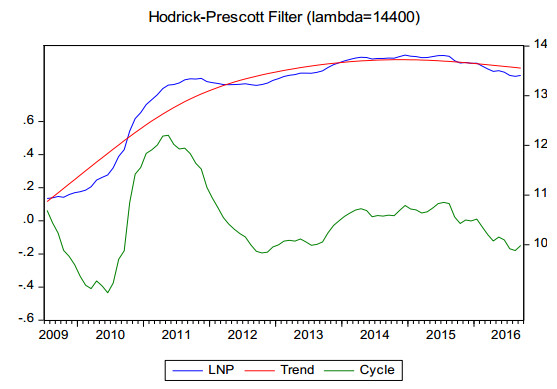
 DownLoad:
DownLoad: 



